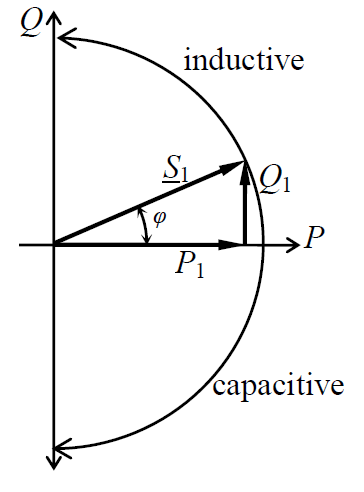ABSTRACT
In the recent years, the application of renewable sources (solar energy, wind energy, geothermal energy, etc.), rapidly grows. Besides the electricity generation and the advantages for the environment, the grid connected solar photovoltaic (PV) plants provide additional benefits to the electric grids, such as: reducing the transmission and distribution losses, improving the grid voltage conditions, on site generation of reactive power etc.
An issue that is lately actual and engage engineers and researchers is the management of reactive energy in the PV plants. The interconnection components (power transformers, AC cables) in the PV plants require reactive power, which is regularly supplied by the distribution network (grid). Alternatively, the inverters may supply these components with reactive energy, and if properly managed they may remarkably reduce the costs for the supplied reactive energy and consecutively cut down PV power plants’ electricity bills.
In this paper, the generation of reactive energy by the PV power plants, in order to decrease electricity costs, is researched. In order to do this, firstly, the power transformer and cables connecting inverter to the grid are modelled using measurements data from existing 1 MWp PV power plant. Using this, a dependence of the generated reactive power vs. the inverter’s output power has been set.
From one hand the reduction of reactive power use decrease costs, but from the other hand, it leads to a slight decrease of the generated electrical energy by the PV plant. Hence, a cost-benefit analysis, for different feed-in tariff, regulated tariff and free market price scenarios, has been carried out, and then it is estimated the effectiveness of presetting the reactive power control for the inverters.
Keywords: Photovoltaic plants, reactive energy, transformer model, cable model, cost-benefit analysis
INTRODUCTION
In the last years, the application of electricity generation using renewable sources (solar energy, wind energy, geothermal energy, etc.) rapidly grows. Besides the savings of fossil fuels reserves, the progress is mainly due to their high reliability in supply, low operation and maintenance costs, possibility for electrification of rural areas with lower costs, and what is very important – they are environmentally friendly. In favour of these is the fact that from a year to year, the number of installed photovoltaic (PV) plants grows worldwide [1]. This is
mainly a result of introduced country feed-in tariffs schemes, but also to the achieved level of system components mass production [2].
Besides the advantages from the aspects of energy supply and environmental protection, the grid connected PV plants provide additional benefits to the electric grids, such as reducing the transmission and distribution losses, improving the grid voltage conditions, on site generation of reactive energy etc [3-5].
………………..
Often in practice, the consumed reactive energy is locally reduced by using of reactive power compensators. However, the generation of reactive power (or reducing of consumption of reactive energy) can also be accomplished by the help of modern inverters used in PV systems. Initially (by default) inverters are set to provide only active power to the grid (operate at power factor cos φ = 1), but for some specific needs they may generate or consume reactive power from/to the grid. This convenience is implemented in grid regulations regarding distribution systems in Germany ………………
A lot of work has been done to estimate the benefits of integrating the PV systems into the grid, the loss reduction, voltage condition improvement etc. [3-7, 9, 10]. However, these studies are more focused to the grid side. This paper concentrates to the possibilities for increasing the revenues for the PV plants owners, that offer benefits to the distribution networks.
PV PLANT GRID INTERCONNECTION COMPONENTS MODEL
The apparent inverter output power S1 depends on the actual values of solar radiation and PV module cell temperature, as well as of the PV generator parameters. Its components (active and reactive power) are dependent on the phase angle φ between AC voltage and the current. On fig. 1 is given the phasor diagram of the power components, where are shown the portions of the apparent, active and reactive power, when the power factor cos φ < 1.
When cos φ = 1, the active power is equal to the apparent, but in case φ > 1, the active power is decreased and reactive power is supplied on-site. This reactive power can be absorbed by the interconnection components of the PV plant or supplied to the network. The case of consuming the reactive power (φ < 0) by the inverter is possible, but in practice is not significant.
Figure 1. Power components







